Alice Blackwood and Mandi Keighran visit the Spazio Rossana Orlandi to meet with Omer Arbel, Head of the Omer Arbel Office and Creative Director of Bocci.
May 5th, 2011
Omer Arbel likes to explore the possibilities of material and process, working with master crafts people to stretch the boundaries of techniques such as glass blowing and sand casting.

On show at the Spazio Rossana Orlandi this year was number ’19’, a set of sand blasted copper bowls – which are more installation pieces than functional items.
They represented one of 2 projects by the Canadian architect and designer – the other being his beautiful glass blow number ’28’ lights for Bocci.
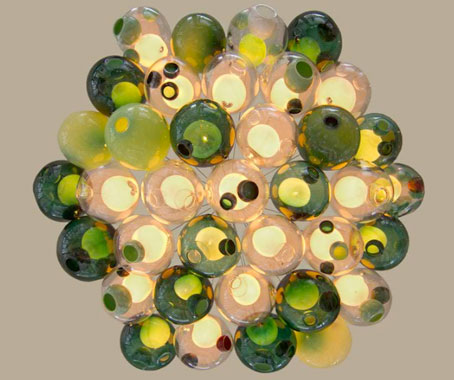
Omer spoke a little about both pieces, but it was his description of the making process of the number ’19’ which really captured our attention.
“Typically in most design and architecture situations, there’s a shape or form born in the author’s [or designer’s] imagination and that shape informs the work.
“What we’ve been focussing on in the last couple of years is an approach where we design systems of fabrications, and these systems yield form.
“Here we’re exploring a technique called sand casting – an imprecise and coarse way to manipulate and make metallic objects – like fire hydrants for example.
“Here, you take a wood shape, press it into sand to make a void/cavity and pour metal into it, roughly, very coarsely, filling up the cavity. You shake away the sand and there’s your piece.
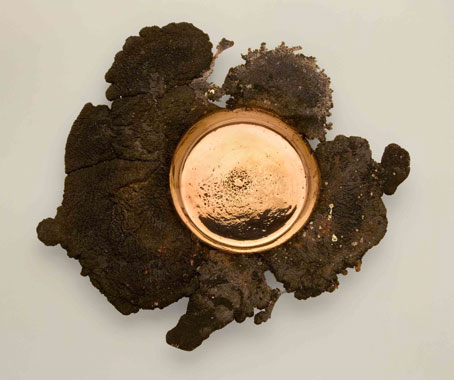
“Here, we developed a mould system, but there’s a very large opening around the perimeter of the mould; we pour the liquid metal in, over-pouring so it overflows from the cavity, and of course we can’t control the overflow.
“These aren’t necessarily functional as a piece. It’s not necessary for it to be functional; we’ve done it because we’re interested in the process and results.
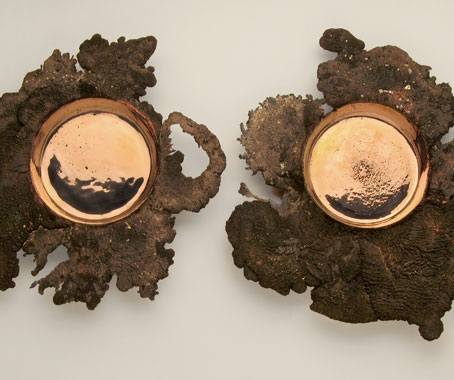
“I collaborate with crafts people. I used to think the designer’s role was to also become involved in the making, especially because our approach relies on the process of making, heavily. And in the beginning I made all the pieces myself.
“Since then I’ve learnt that I can spend a lifetime learning to be a great designer or great architect and that would be a lifetime of pursuit… but unfortunately I only have one. You need to devote an entire lifetime to become a master glass blower or sand caster, or any of these techniques.
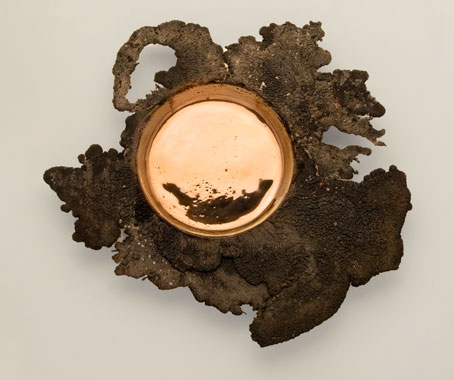
“So that’s how I see my role now, and I consider it a collaboration. It’s my role to harness that energy (and their knowledge) and propose unconventional things.”
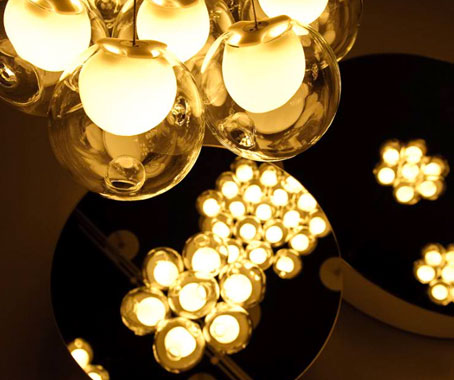
Omer Arbel
omerarbel.com
Bocci
bocci.ca
A searchable and comprehensive guide for specifying leading products and their suppliers
Keep up to date with the latest and greatest from our industry BFF's!

Sub-Zero and Wolf’s prestigious Kitchen Design Contest (KDC) has celebrated the very best in kitchen innovation and aesthetics for three decades now. Recognising premier kitchen design professionals from around the globe, the KDC facilitates innovation, style and functionality that pushes boundaries.

In the pursuit of an uplifting synergy between the inner world and the surrounding environment, internationally acclaimed Interior Architect and Designer Lorena Gaxiola transform the vibration of the auspicious number ‘8’ into mesmerising artistry alongside the Feltex design team, brought to you by GH Commercial.

Channelling the enchanting ambience of the Caffè Greco in Rome, Budapest’s historic Gerbeaud, and Grossi Florentino in Melbourne, Ross Didier’s new collection evokes the designer’s affinity for café experience, while delivering refined seating for contemporary hospitality interiors.

Savage Design’s approach to understanding the relationship between design concepts and user experience, particularly with metalwork, transcends traditional boundaries, blending timeless craftsmanship with digital innovation to create enduring elegance in objects, furnishings, and door furniture.

Here’s the lowdown on what to expect at Design Shanghai 2019, which lands at the Shanghai Exhibition Centre from 6 to 9 March.

Janet Laurence teams up with John Wardle Architects to hero WA’s most precious rocks in an architecturally crafted ‘cabinet of curiosity’.
Melding art deco, futurism and turn-of-the-century industrialism, Bar Ampere is a whimsical new addition to Melbourne’s bar scene.
The 12th annual Scultpure by the Sea is on again. The series of over 100 sculptures stretching 2km from Bondi to Tamarama will take place between 16 October and 2 November 2008. Admission is free and you can take as long as you like to take in all the sculptures. sculpturebythesea.com
The internet never sleeps! Here's the stuff you might have missed

Available now across Australia, Eden TPO is setting new standards in terms of not just sustainability, but also style.

Savage Design’s approach to understanding the relationship between design concepts and user experience, particularly with metalwork, transcends traditional boundaries, blending timeless craftsmanship with digital innovation to create enduring elegance in objects, furnishings, and door furniture.